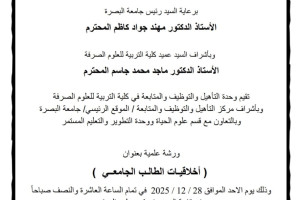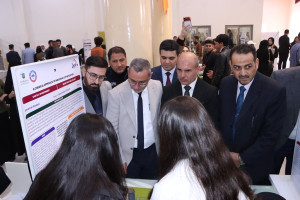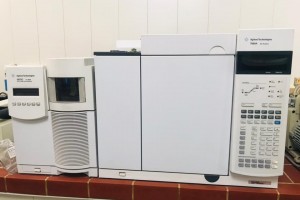
The College of Education for Pure Sciences, Department of Physics, discussed a master's thesis on (Magnetic Properties and Electronic Structure of Semi-Heusler Alloys)
The thesis presented by researcher (Rabab Abdul Rahman Saleh) included semi-metallic materials.
The first to discover these materials was researcher De Krot
and his partners in 1983 in two compounds, which were the first alloys to be called semi-metallic materials.
Semi-metallic materials are a new class of materials, as these materials have a distinctive property through the presence of two channels for spinning: the first channel is spinning electrons upwards, which leads to the formation of the metal property in most cases, and the second channel is spinning electrons downwards, which leads to the formation of the semiconductor or insulator property with an energy gap.
Semi-metallic materials are characterized by their ability to interact uniquely with light, as they can reflect
Semi-metallic materials with their effective ability to absorb light energy, which enhances the possibility of using them in the field of solar energy and light energy conversion technologies.
A comprehensive study of the optical properties in the energy range (0-30 eV) of the compound KCrS was conducted. In this study, we calculated the optical properties of the compound KCrS, which are: absorption coefficient, refractive index, extinction coefficient, reflectivity, conductivity, loss function, and insulation function. The research of the thesis concluded that the semi-Heussler compound KCrS, which belongs to the space group F-43m, is a semi-metallic compound and that the lattice constant at equilibrium is (6.63Å). The largest contributor to the value of the magnetic moment is (6.63Å). The magnetic moment of the compound is (6.63Å). The KCrS compound behaves like a metal in the upward twist channel, while it behaves like a semiconductor in the downward twist channel with an energy gap at the Fermi level EF equal to (3.29 eV). We noticed that the higher the value of the lattice constant, the lower the energy gap. Increasing the lattice constant leads to a reduction in the energy gap in the conduction band, crossing the Fermi level, and thus the semi-metallic property will disappear.









